In today’s ever-evolving software development landscape, the implementation of DevOps principles has quickly emerged as a cornerstone for organizations aiming to optimize their workflows. DevOps represents more than a methodology; it’s a transformative approach that harmonizes software development and IT operations, enriching efficiency, reliability, and speed across the software lifecycle.

In our previous exploration of best Devops practices, we delved into the fundamental principles and practices of DevOps. Building upon those insights, this article aims to further understand and illuminate the transformative strategies essential for seamless teamwork, automation, security, and performance enhancement within your development and operational processes.
This comprehensive exploration delves into the core DevOps fundamentals and essential principles. From dissecting the pivotal pillars that define DevOps to unraveling the guiding ideologies shaping its architecture and philosophy, this article navigates through the crucial components and fundamental ideologies steering the DevOps landscape.
1. What are DevOps Fundamentals?
In the rapidly evolving landscape of software creation, the adoption of DevOps principles represents as a cornerstone for organizations seeking to optimize their workflows. DevOps, short for Development and Operations, isn’t merely a methodology. From programmers and engineers to QA and system administrators, this methodology bridges the gap between departments, enhancing efficiency, dependability, and speed throughout the software lifecycle.
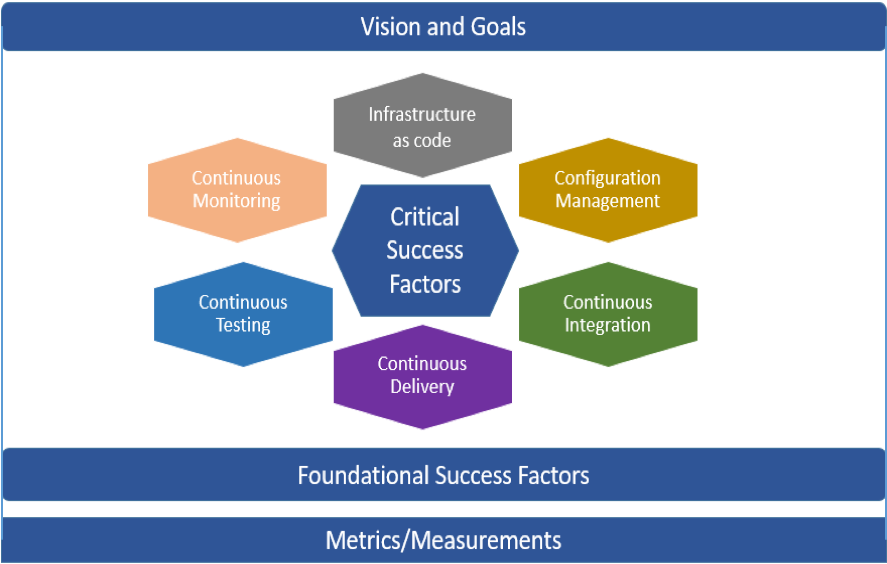
At its core, DevOps fundamentals revolve around several critical pillars, each playing an indispensable role in shaping the philosophy:
Continuous Integration and Continuous Delivery (CI/CD)
Central to DevOps practices is the notion of Continuous Integration (CI) and Continuous Delivery (CD). CI involves the frequent integration of code modifications into a shared repository, allowing early bug detection and smoother teamwork. Continuous delivery, on the other hand, automates the release process, ensuring that the product is deployable at any given time, fostering faster and more dependable program iterations.
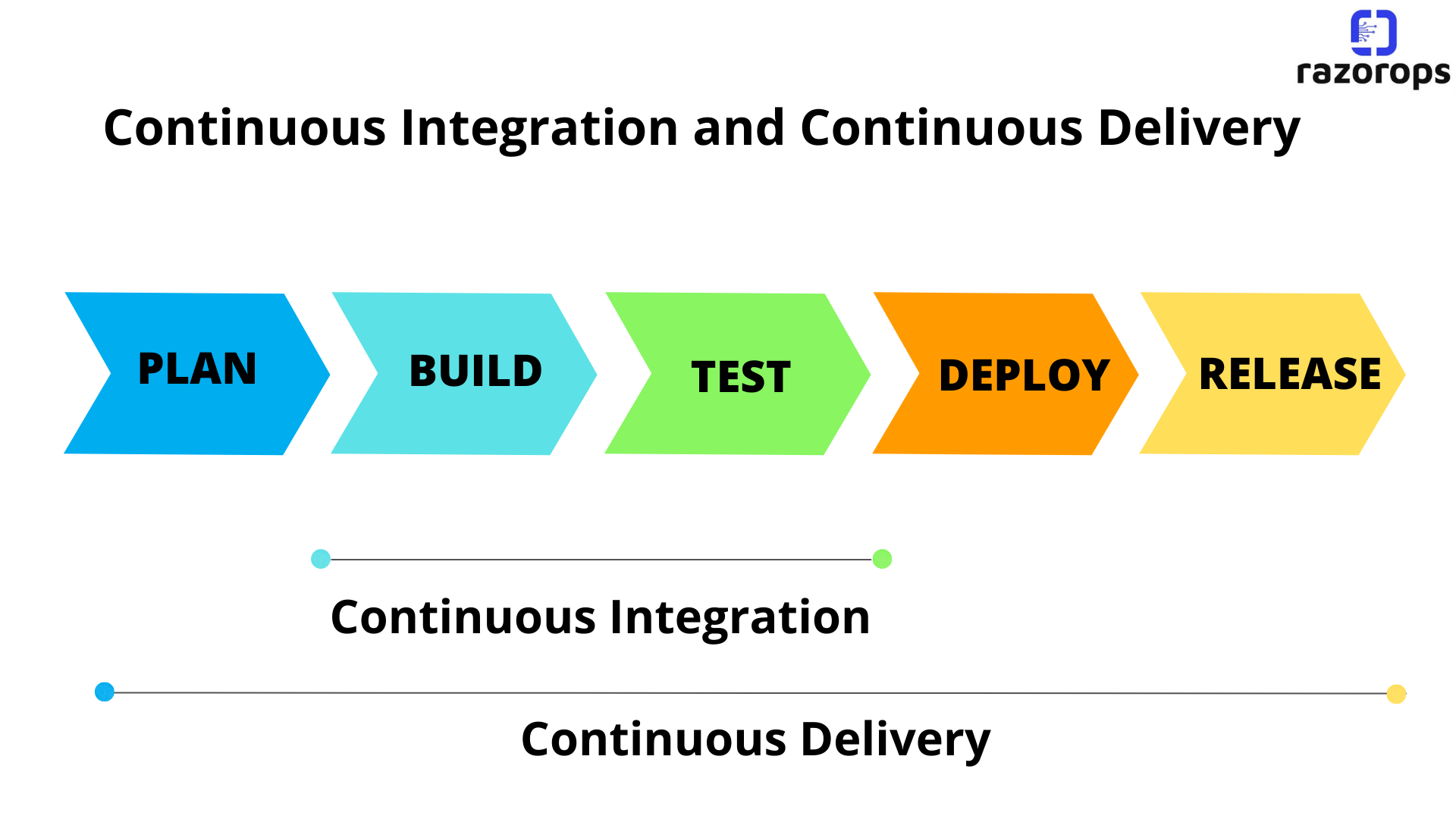
Infrastructure as Code (IaC)
Another fundamental aspect is Infrastructure as Code (IaC), a paradigm shift in managing, scaling and provisioning computing infrastructure through machine-readable scripts or declarative definitions. This approach streamlines infrastructure management, making it more scalable, reproducible, and easier to maintain.
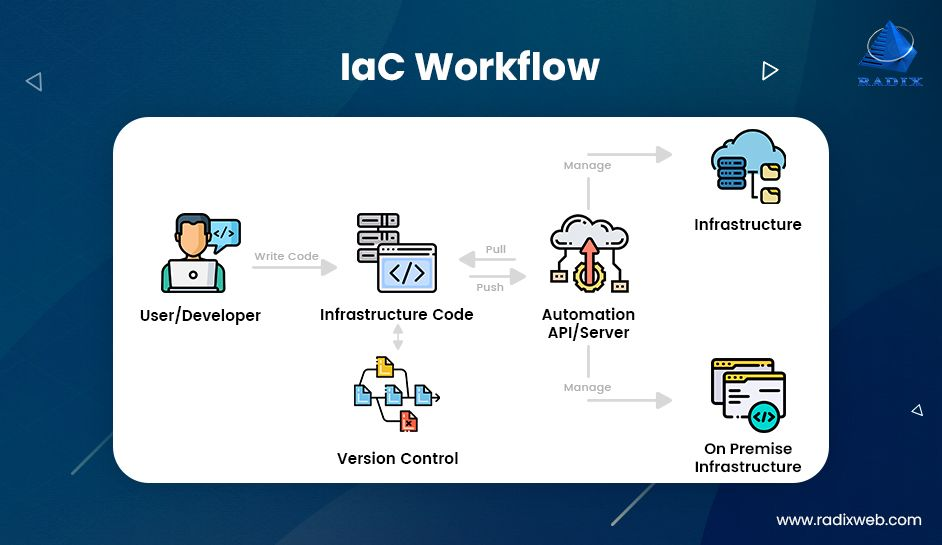
Automation and Agile Development
DevOps advocates for automation at every stage of the software development lifecycle (SDLC), aiming to eliminate manual interventions wherever possible. It complements Agile methodologies by fostering iterative, collaborative, and customer-centric coding methods.
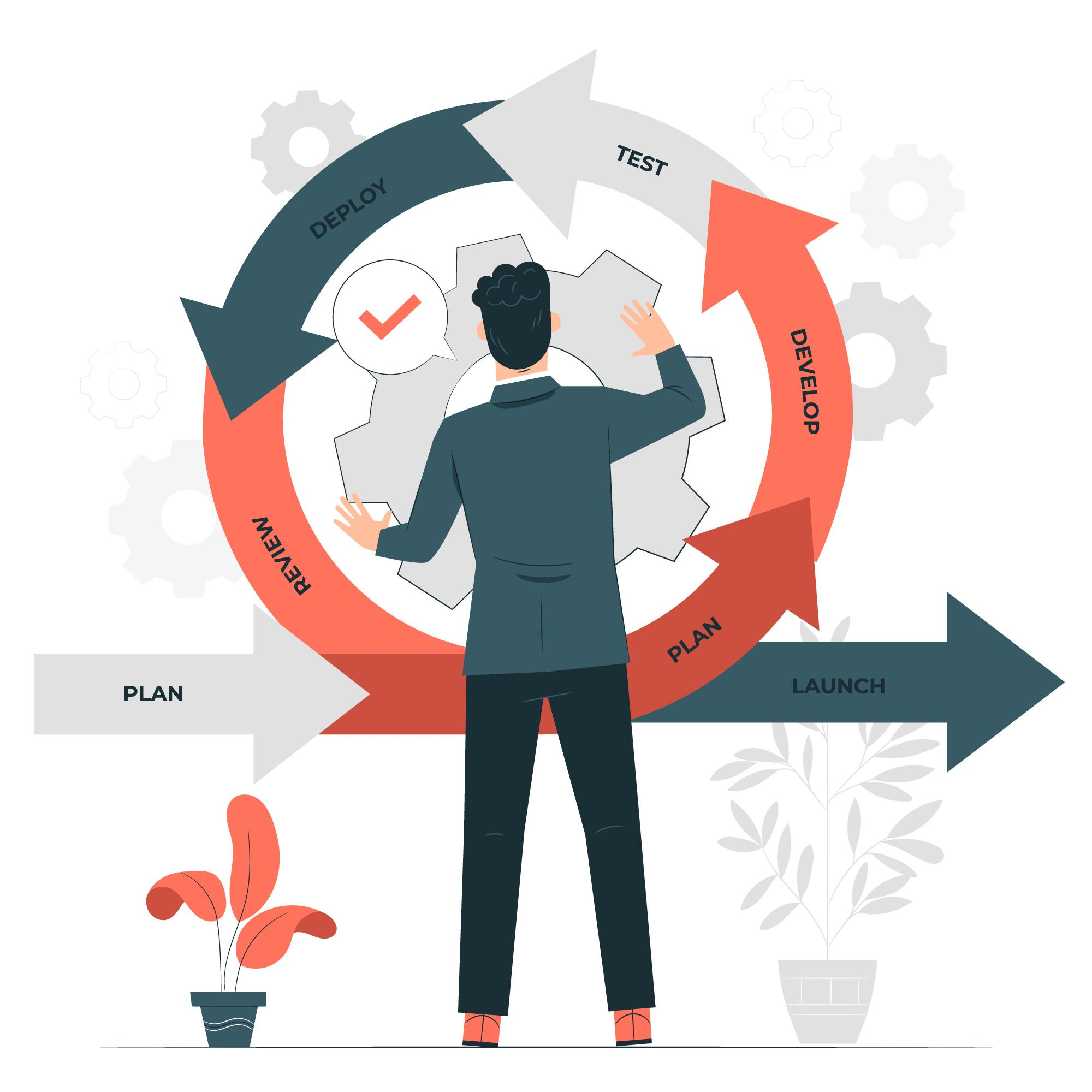
Collaboration and Communication
Effective teamwork and seamless communication between traditionally siloed development and operations teams are paramount in DevOps. It encourages an environment where teams work cohesively, share knowledge, learn together and collectively own the responsibility for both programming and its operational facets.
Version Control Systems (VCS)
Version Control Systems (VCS) play a crucial role in DevOps by tracking changes in the source code, facilitating coordination, and enabling teams to work concurrently on different aspects of the software without conflicts.

Understanding these core DevOps fundamentals lays the groundwork for implementing an efficient and streamlined software development ecosystem. In the following sections, we’ll delve deeper into each fundamental aspect, unraveling their significance, benefits and contributions within the DevOps landscape.
2. What are the Fundamental Principles of DevOps?
The Fundamental Principles of DevOps encapsulate the guiding ideologies and practices that underpin Its core principles revolve around fostering cooperation, optimizing processes, and ensuring continual enhancement across the realms of software evolution and operational efficiency. These principles encompass several core tenets:
Flexibility and Agile Methodology
DevOps harmonizes with Agile methodology, fostering adaptability and responsiveness. This principle encourages envisioning the ultimate objectives from the project’s outset, promoting flexibility and ability to swiftly adapt to evolving requirements.

Continuous Testing and Monitoring
Emphasizing ongoing testing and monitoring, DevOps ensures that software remains congruent with the desired end goals. This proactive approach allows for maintaining quality standards throughout every step of the development cycle.
Feedback Loop and Improved Communication
DevOps thrives on constant feedback loops and improved communication channels. Aligning communication and feedback mechanisms with the envisioned end state enables seamless incorporation of user feedback, ensuring the final product meets user expectations.

Reliable Software and Efficient Software Development
Central to DevOps is the reliability and efficiency in software development. Corresponding with the principle of ‘beginning with the end in mind,’ teams anticipate and ensure a seamlessly functioning and efficient final product.
DevOps Culture and Core Principles
The DevOps culture emphasizes collaboration, shared responsibilities, and transparency among teams. This culture ensures that individual actions are attuned to the collective goal of delivering user-centric, high-quality software.
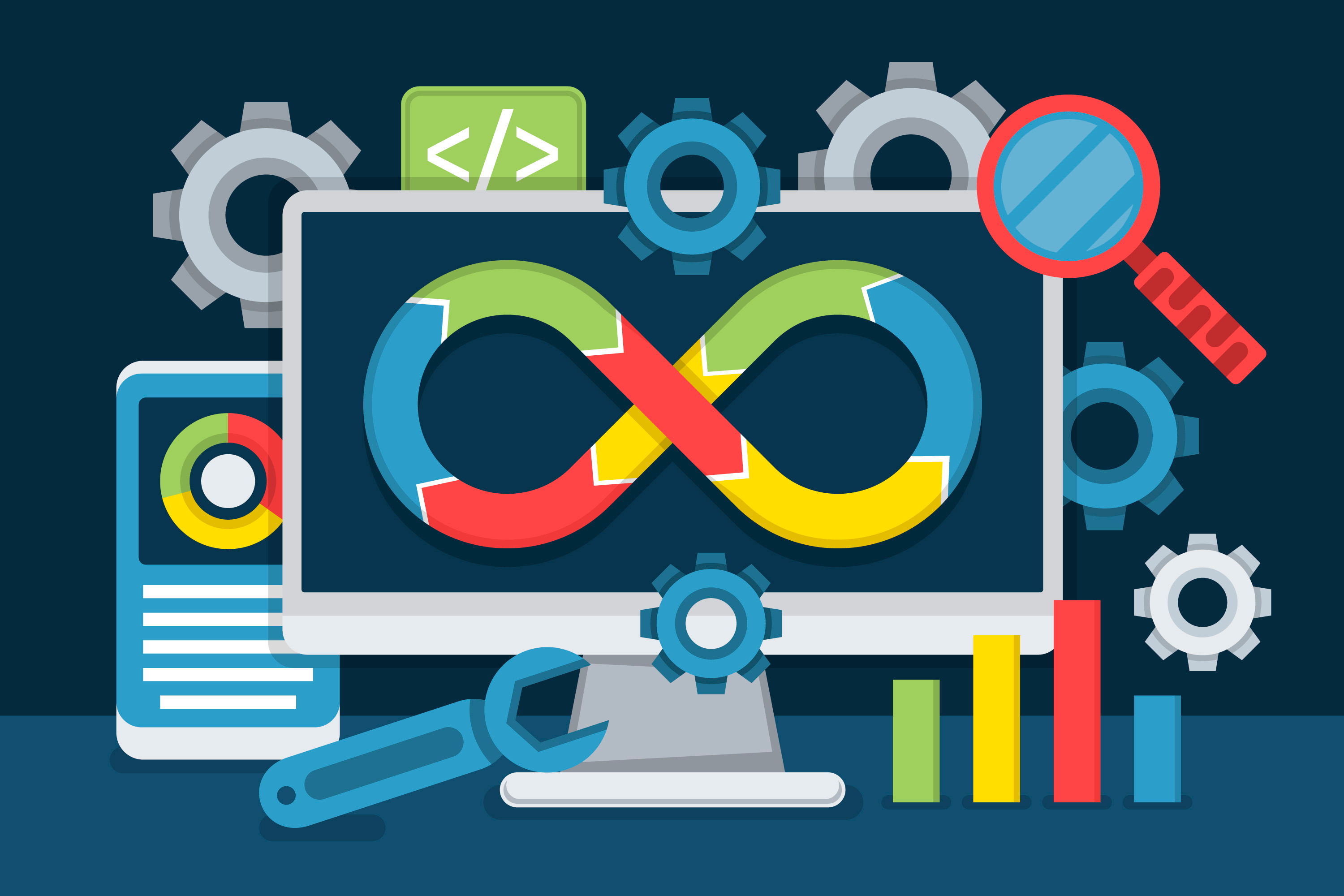
DevOps concepts embody the ethos of anticipating the desired outcomes from the project’s inception, enabling teams to adapt, communicate effectively, maintain high standards, and collectively work towards delivering valuable software solutions.
3. What is the Basic of DevOps?
DevOps serves as a pivotal philosophy and practice revolutionizing the software development landscape. It harmonizes and streamlines the collaboration between development and operations, reshaping traditional software delivery methodologies into an agile, continuous, and collaborative approach. Understanding the essence of DevOps involves grasping its fundamental principles and integrated practices:
DevOps as a Philosophy and Practice:
DevOps represents a pivotal cultural and procedural shift in software development. Beyond a set of practices, it embodies a clear and transformative philosophy fostering collaboration and shared responsibilities among development and operations specialists.
Alignment of Development and Operations Teams:
DevOps dismantles traditional silos between development and operations, emphasizing collective objectives and shared accountabilities. This alignment ensures that software development resonates closely with operational needs from inception to deployment.
DevOps Practices and Processes:
Best DevOps practices center on automation, agility, and continual enhancement. Automation streamlines repetitive tasks, enabling consistent and reliable software delivery. Agile methodologies are inherent, prioritizing iterative and customer-centric development approaches.
Software Development and Deployment:
DevOps promotes treating infrastructure as code (IaC), empowering teams to manage infrastructure through machine-readable scripts. This ensures scalability, consistency, and traceability throughout the deployment process. Incremental updates reduce risks associated with large-scale deployments.
Processes and Tasks in DevOps:
DevOps practice encompasses an interconnected series of processes spanning code development, source code control, automated testing, deployment orchestration, infrastructure management, and continuous monitoring. Each phase is interconnected, emphasizing efficiency, quality assurance, and user-centric software delivery.
In essence, DevOps signifies a paradigm shift in software development and operations. By merging development and operations seamlessly, DevOps fundamentally transforms how organizations conceive, build, deploy, and maintain software.
4. What are the Key Concepts of DevOps?
DevOps embodies several key concepts that are integral to its philosophy and implementation. These pivotal concepts form the backbone of DevOps, fundamentally altering the traditional paradigms of software delivery and operational efficiency. They not only underpin the collaborative ethos within development and operations departments but also revolutionize the very essence of how software is conceptualized, developed, tested, and deployed.
CI/CD Pipelines and DevOps Pipeline
Continuous Integration and Continuous Delivery (CI/CD) pipelines are the backbone of DevOps practice. These pipelines automate the software release process, ensuring rapid integration, testing, and delivery of code changes. By automating these workflows, developers can frequently merge code changes into a shared repository, where it undergoes automated testing and then gets deployed to production environments. The DevOps pipeline orchestrates this end-to-end process, fostering a more efficient and streamlined software development lifecycle.
Containerization and Deployment
Containerization, propelled by tools like Docker and Kubernetes, encapsulates application code and dependencies into portable containers, ensuring uniformity across diverse environments. These containers enable effortless deployment and scalability. DevOps harnesses containerization to streamline deployment processes, facilitating the smooth movement of applications between development, testing, and production environments with continuous deployment, ensuring consistency throughout.
Collaboration and Security in DevOps
Collaboration stands as a core pillar of DevOps, emphasizing effective communication and cooperation among cross-functional teams. Security is integrated throughout the DevOps lifecycle, focusing on implementing security measures at every stage—from code development to deployment—to mitigate potential vulnerabilities. DevOps ensures that security practices are not obstacles but enablers of rapid and secure software delivery.
Automation and Operations Management
Automation lies at the heart of DevOps, aiming to minimize manual intervention and optimize repetitive tasks across the software development lifecycle. It encompasses automating testing, deployment, and infrastructure provisioning. Operations management in DevOps involves efficiently managing infrastructure, monitoring system health, and ensuring scalability while aligning with business objectives.
Monitoring and Metrics in DevOps

Source: BiPlus
Continuous monitoring and metrics are fundamental to DevOps practices. Monitoring tools track system performance, application behavior, and user experience, providing real-time insights. Metrics offer visibility into key performance indicators (KPIs), enabling teams to identify bottlenecks, enhance system reliability, and make data-driven decisions to improve the software delivery process.
These key concepts form the foundational elements of DevOps, enabling organizations to achieve faster delivery, higher quality software, and enhanced collaboration across multifunctional teams.
5. DevOps Tools At Various Stages Of DevOps Cycle
DevOps embraces a plethora of specialized tools and technologies strategically employed at different stages of the software developing cycle. These tools facilitate streamlined operations, bolster collaboration, automate tasks, and fortify security measures, contributing significantly to the efficacy of DevOps practices. Below, we delve into the categories of tools utilized throughout the DevOps lifecycle, elucidating their pivotal roles in optimizing development and deployment workflows.
Development Phase Tools and Technologies

In the development phase, teams leverage Integrated Development Environments (IDEs) like Visual Studio Code, IntelliJ IDEA, or Eclipse, empowering developers with comprehensive environments for coding, testing, and debugging. Additionally, collaboration platforms and services such as GitHub, GitLab, or Bitbucket are instrumental in source code management and fostering collaborative development among teams.
Testing and Collaboration Tools

Continuous Integration (CI) tools like Jenkins, Travis CI, or CircleCI automate the build and test processes, enabling early detection of code issues. Simultaneously, collaboration platforms such as Slack, Microsoft Teams, or Atlassian’s Confluence facilitate seamless team communication and knowledge sharing.
Deployment and Monitoring Tools
For deployment and monitoring, containerization platforms like Docker and Kubernetes simplify application deployment and scalability. Monitoring solutions like Prometheus, Grafana, or Datadog provide robust capabilities for monitoring infrastructure, application performance, and user experience.
Operations and Security Tools
Operations are streamlined with the use of configuration management tools like Ansible, Puppet, or Chef, ensuring automated configuration and infrastructure management for consistency and reliability. Meanwhile, security testing tools such as OWASP ZAP, SonarQube, or Nessus aid in identifying and addressing security vulnerabilities in the codebase.
Version Control and Git

Git, a leading Version Control System (VCS), empowers teams to track code changes, manage versions, and collaborate effectively, serving as the backbone for source code management in DevOps practices.
DevOps tools span a wide spectrum, tailor-made for distinct stages of the DevOps lifecycle. These diverse tools and technologies play a pivotal role in streamlining operations, enhancing collaboration, automating tasks, and fortifying the robustness and security of software development and deployment.
Conclusion
Understanding the fundamental principles and core concepts of DevOps is pivotal for modern businesses striving to streamline their software development practice and operational processes. From Continuous Integration to robust monitoring practices, DevOps empowers organizations to foster collaboration, automation, and reliability in software delivery. Continuous Delivery, an integral component of DevOps, ensures that software remains consistently deployable throughout its lifecycle, facilitating rapid and reliable releases, aligning with Continuous Integration to create an agile effective software development pipeline.
Embracing DevOps extends beyond adopting a methodology; it’s a cultural transformation integrating practices for streamlined software delivery. By integrating DevOps fundamentals into workflows, businesses drive innovation, deliver top-tier software, and stay agile in a competitive digital sphere. To explore further insights into future perspectives, shedding light on how these principles shape tomorrow’s technological landscapes and steer companies toward efficient and adaptive practices, refer to our previous post.





